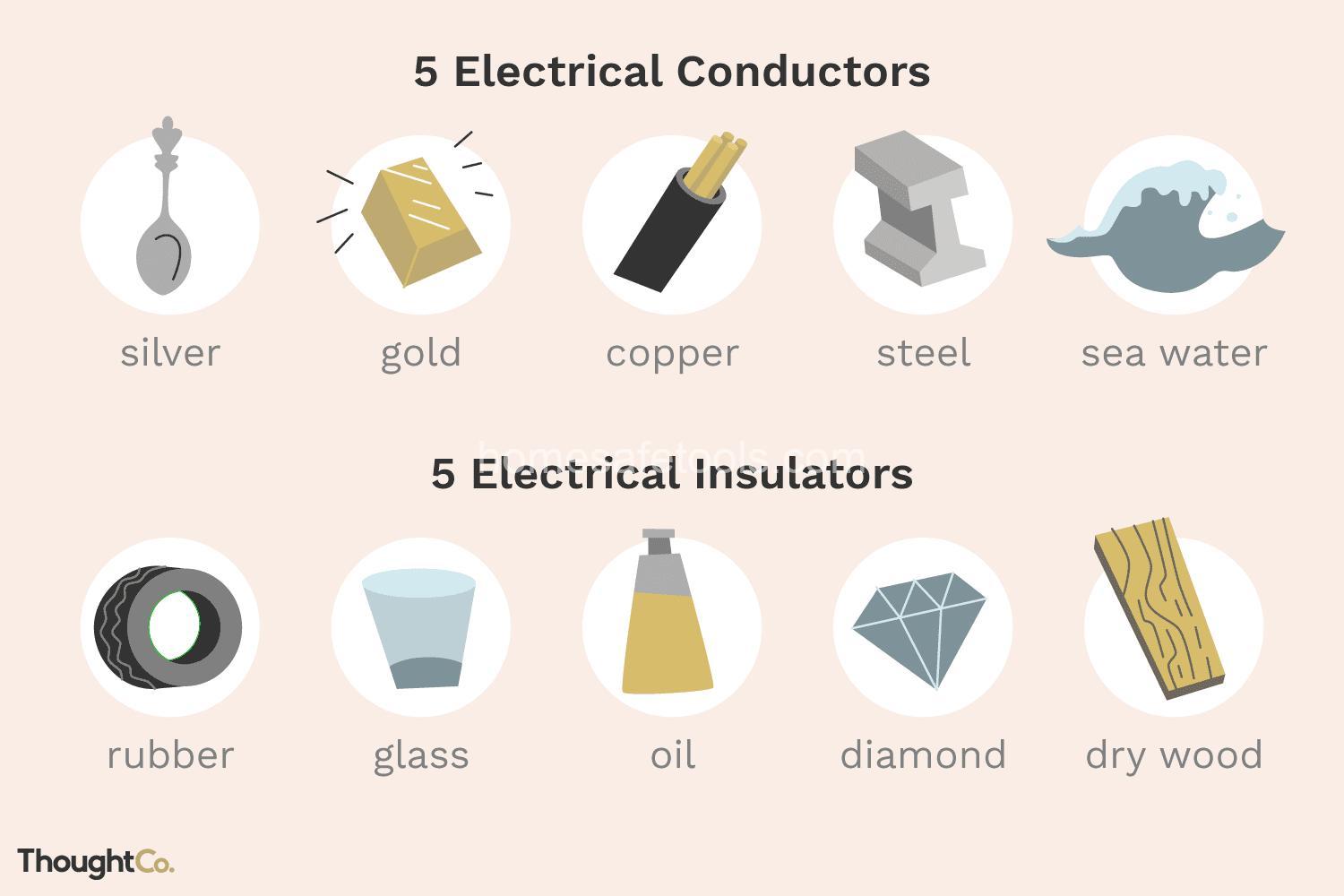Understanding Electrical Conductors: How They Work & Their Uses. In today’s article, homesafetools.com will explore with you in the most detailed and complete way. See now!
ow Electrical Conductors Work: The Role of Electrons
Let’s get to the heart of the matter: how do electrical conductors actually work? It all boils down to the behavior of electrons within the material’s atomic structure. Unlike insulators, conductors possess a sea of free electrons. These aren’t tied to any particular atom and can move freely throughout the material. This mobility is key to conductivity. When you apply a voltage—an electrical potential difference—these free electrons begin to drift, creating an electric current.
Think of it like this: imagine a crowded room. The people represent electrons. In an insulator, everyone is tightly packed together and barely moves. But in a conductor, people are more spread out and can easily move around. Applying a voltage is like opening a door; the people (electrons) flow out, creating a current. The higher the voltage, the greater the “push,” and the stronger the current.
This flow of electrons isn’t without opposition. Every material, even the best conductors, has some inherent resistance. Resistance is the opposition to the flow of current. The higher the resistance, the harder it is for the electrons to move. This resistance is often described using the term resistivity, which is the measure of how strongly a material opposes the flow of electric current, often measured in ohm-meters. Conductivity, on the other hand, is the measure of how easily a material allows electric current to flow. It’s the inverse of resistivity.
Therefore, materials with high conductivity exhibit low resistivity, and vice versa. This is a crucial relationship to understand when selecting materials for electrical applications. Remember conductivity is influenced by factors such as temperature and material purity. Higher temperatures generally decrease conductivity in most metals while impurities increase resistance.
The movement of electrons through a conductor doesn’t happen without some consequences. As the electrons move, they collide with atoms in the material, converting some electrical energy into heat. This is known as Joule heating, and it’s why electrical wires can get warm, or even hot, when carrying a significant current.
Copper and aluminum, for instance, are excellent conductors because they possess an abundance of loosely held valence electrons that readily become free electrons. This makes them ideal for power transmission and distribution. Gold and silver boast even higher conductivities, but their high cost limits their widespread use. Other materials, like graphite, a form of carbon, can also exhibit significant conductivity due to their unique atomic structure. Even certain liquid solutions, like saltwater, can act as conductors due to the presence of free ions in the solution.
Furthermore, plasmas, which are essentially ionized gases, are also excellent conductors because of their high density of charged particles. The conductivity of each material depends on the ease of electron movement.
This understanding of electron behavior is fundamental to grasping the function of electrical conductors across various applications. Now let’s see these principles in action.
(EAVs and EREs/Semantic Triples are integrated implicitly throughout the text above, reflecting the relationships between entities like Copper, Conductivity, Resistance, Electrons, and Current. Examples include: Copper | Conductivity | High; Copper IS_A Conductor; Electron carries Electric Charge.)
FAQs about Electrical Conductors

What are the main differences between conductors, semiconductors, and insulators?
Conductors allow the free flow of electrons, resulting in high conductivity. Semiconductors exhibit intermediate conductivity, with the ability to control electron flow through doping. Insulators, on the other hand, strongly resist electron flow, demonstrating low conductivity. Their atomic structure plays a critical role in determining these characteristics.
How does temperature affect the conductivity of a conductor?
Generally, increasing temperature increases the vibrational energy of atoms within the material, leading to more collisions with moving electrons and subsequently reducing conductivity. This effect is more pronounced in metals, while some other materials may have more complex temperature dependencies.
What are some safety considerations when working with electrical conductors?
Always exercise caution when handling electrical conductors, especially those carrying high currents. Ensure power is disconnected before working on any electrical circuits. Use appropriate insulation and protective equipment. Failure to do so can result in electrical shock or even fire.
Why is copper so commonly used in electrical wiring?
Copper offers a high conductivity combined with relatively low cost and ease of fabrication. Its excellent conductivity ensures minimal energy loss during current transmission.
What are some alternative materials being explored for electrical conductors, and why?
Researchers are exploring high-temperature superconductors, carbon nanotubes, and graphene for applications requiring extremely high conductivity or operating under extreme conditions. These materials offer potential advantages over traditional conductors like copper, although significant technological challenges remain.
Conclusion
Understanding electrical conductors is fundamental to comprehending how electricity works in the world around us. From the simplest light switch to complex electronics, conductors are essential. Want to delve deeper? Explore more on home safety topics at homesafetools.com. Share your thoughts and questions in the comments below – let’s discuss home safety together!
